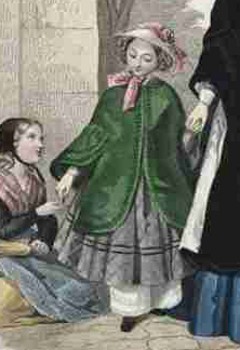Victorian women’s fashion is often romanticized, but the reality of their undergarments was far more practical. One of the most intriguing aspects of these garments is the design of women’s drawers, specifically the curious “fake split” or open crotch seam. Why did this seemingly unusual feature exist? This article delves into the history of Victorian drawers, exploring the reasons behind the split and its impact on women’s lives.
The Rise of Drawers in Victorian England
Early in the 19th century, drawers were not common attire for British women. Instead, they opted for stockings and layers of petticoats under their dresses. However, the increasing popularity of sheer Empire-waist dresses led some women, particularly the wealthy, to adopt men’s drawers (also known as pantaloons) for modesty. These were typically close-fitting and made of flesh-toned fabric. By the 1830s, drawers, sometimes referred to as “trowsers,” became widely accepted among British women.
The Practicality of the Split: Hygiene and Convenience
The split crotch in women’s drawers was not a “fake split” but a functional necessity. The layers of petticoats and corsets worn by Victorian women made it incredibly difficult to remove and re-don their drawers for using a chamber pot. The open seam allowed for easier access without having to completely undress.
This design was also considered hygienic by some. Many medical professionals at the time believed that women’s nether regions required ample ventilation to prevent “dampness” and subsequent “hysteria.” While this belief is now understood to be inaccurate, it nonetheless influenced undergarment design.
The Evolution of Drawers: From Split to Closed
As the century progressed, societal norms and fashion trends evolved. The introduction of the cancan dance in the mid-1800s, with its high kicks and potentially revealing movements, may have contributed to the emergence of drawers with buttoned closures. However, the open split design remained popular, particularly among women who continued to wear corsets. It wasn’t until the late Victorian era and into the early 20th century that closed-crotch drawers became more commonplace.
The Influence of the Bloomer Movement
The Women’s Emancipation Movement of the 1850s, and the associated rise of “bloomers” (loose trousers gathered at the ankles), also impacted undergarment styles. While bloomers themselves were considered outerwear, they paved the way for greater acceptance of women wearing trousers, eventually leading to changes in underwear design.
Drawers in the Late Victorian Era and Beyond
By the late 1800s, shorter, closed drawers or “under-shorts” became more readily available for women. The advent of the sewing machine made mass production possible, offering a wider variety of styles and fabrics to a larger consumer base. However, split drawers continued to be produced into the 1920s, catering to women who still preferred corsets.
In conclusion, the split crotch in Victorian drawers was a practical solution to the challenges posed by the era’s fashion and social norms. This design allowed for easier bathroom use, addressed perceived hygiene concerns, and ultimately reflected the evolving needs and preferences of women throughout the Victorian period. While seemingly unusual today, the split crotch served a vital purpose in the lives of Victorian women.

